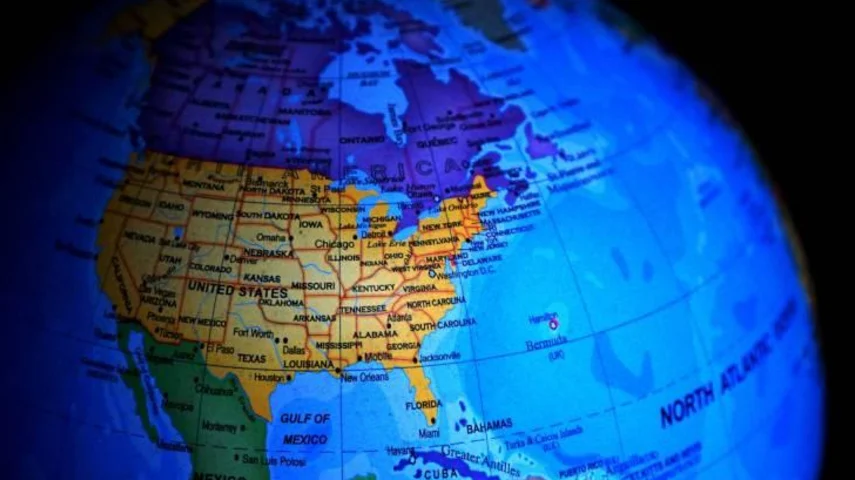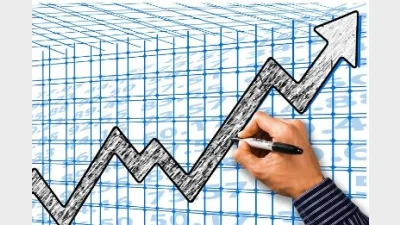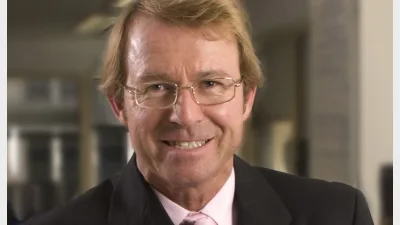IMF calls for collaboration to mitigate economic upheaval



The International Monetary Fund (IMF) has issued a sobering assessment of the global economic landscape in its latest World Economic Outlook, dramatically revised after Trump’s 2 April announcement of sweeping tariff measures.
“This April 2025 World Economic Outlook was put together under exceptional circumstances,” said Pierre-Olivier Gourinchas, economic counsellor at the IMF, speaking ahead of the global gathering of finance ministers in Washington.
“The April 2 Rose Garden announcement forced us to jettison our projections – nearly finalised at that point – and compress a production cycle that usually takes more than two months into less than 10 days.”
Following multiple waves of tariffs by the US on key trading partners and sectors, Gourinchas noted that global tariff rates had surged “to centennial highs”.
He added: “The context for such increases is very different. Unlike in the previous century, the global economy is now characterised by a high degree of economic and financial integration … whose potential unwinding could constitute a major source of economic upheaval.”
According to the IMF, the consequences are already stark.
“We expect that the sharp increase on April 2 in both tariffs and uncertainty will lead to a significant slowdown in global growth in the near term.”
The IMF’s forecasts are rooted in a scenario that includes the most recent tariff decisions as of 9 April.
“Under these reference forecasts, global growth will reach 2.8 per cent this year and 3 per cent next year,” Gourinchas said.
“Under an alternative path that excludes the April tariff announcements, global growth would have seen only a modest downgrade to 3.2 per cent this year.”
The fund’s reference forecast also includes a 1.5 percentage point downgrade in global trade growth for 2025.
Gourinchas warned that trade tensions are not only disrupting immediate supply chains but also undermining confidence, investment and credit access.
He observed that despite Trump’s decision to temporarily halt some retaliatory tariffs, the US effective tariff rate has surged past levels reached more than 100 years ago.
“This pause, even if extended permanently, delivers a similar growth outlook as a reference forecast, 2.8 per cent, even if some highly tariffed countries could benefit,” Gourinchas said.
He cautioned that with uncertainty clouding the path of future trade policy, businesses worldwide are likely to scale back investment and spending.
“Faced with increased uncertainty about access to markets ... many firms’ initial reaction will be to pause, reduce investment and cut purchases. Likewise, financial institutions will re-evaluate their credit supply to businesses,” he said.
The IMF’s analysis also emphasised the structural damage of protectionism, with Gourinchas highlighting tariffs as “a negative supply shock for the economy imposing them”, with a resulting loss of aggregate productivity, lower activity and higher production costs and prices.
As such, the IMF raised the likelihood of a US recession to some 40 per cent, up from its previous forecast of 25 per cent in October.
In a rare glimmer of optimism, the IMF noted that a de-escalation in trade policy could quickly improve the global outlook.
“If countries de-escalate from their current tariff stance and coordinate to deliver clarity and stability on trade policy, the outlook could immediately brighten,” Gourinchas said.
The report’s tone, however, remained firmly cautious.
“At this juncture, while the situation remains fluid, risks remain firmly tilted to the downside,” Gourinchas said. “The global economy … is now being severely tested once again, especially in emerging market and developing economies with more limited buffers.”
Ultimately, he said the IMF is urging countries to uphold “prudence, clarity and increased collaboration”.
On trade policy, he said, the message is clear: “Bring back stability and find mutually beneficial trade arrangements.”
Additionally, Gourinchas said, “monetary policy will need to remain ahead of the curve in the face of multiple challenges”.
“Faced with tariffs and supply chain disruptions, some countries may confront steeper trade-offs between inflation and output,” he said. “Inflation expectations may become less well anchored with a new inflation shock following so close on the heels of the previous one. For these countries, forceful tightening will be needed.”
For others, he noted, the negative demand shock will dominate, and their economies may slump unless policy rates are lowered.
Moreover, Gourinchas said, “We need to continue efforts to turn the tide on weak medium-term growth prospects”, by boosting total factor productivity, particularly through harnessing technological breakthroughs.
“Recent progress of generative artificial intelligence offers such a promise,” Gourinchas said.
“Countries should position themselves to harness it responsibly … by implementing policies to develop the necessary digital infrastructure and acquire the skills necessary to benefit from the AI transition.”
Despite an overall grim projection, Gourinchas underscored that, overall, the global economy is still not in recession territory, though risks have significantly risen.
“While we are not projecting a global downturn, the risks it may happen this year have increased substantially, from 17 per cent projected back in October to 30 per cent now,” he said. “An escalation of trade tensions would further depress growth.”
Recommended for you
Growth from the listed company’s key businesses has propelled Generational Development Group to a new milestones in the three months to 31 March.
Sharemarkets might have been rallying on the back of central banks’ progress in the inflation fight, if not for Donald Trump’s escalating trade tensions and renewed attacks on the US Federal Reserve, according to AMP’s chief economist Shane Oliver.
Super industry advocates are calling on all parties to prioritise stopping abusers from getting access to their victims’ super.
Both economists and money markets have scaled back expectations of a jumbo rate cut in May.












